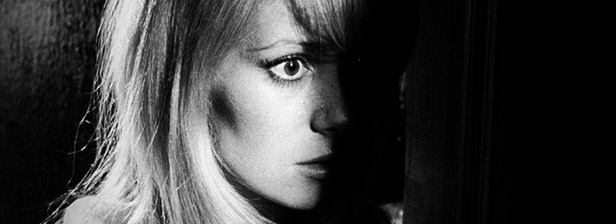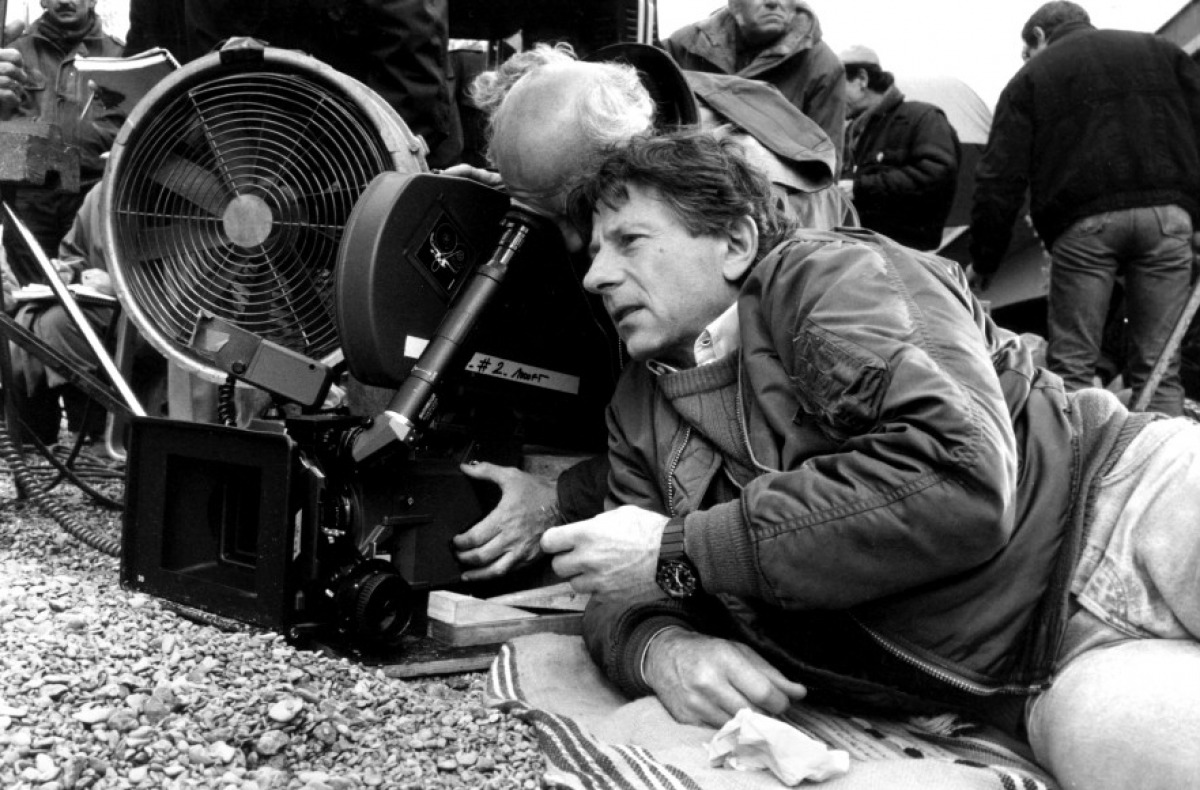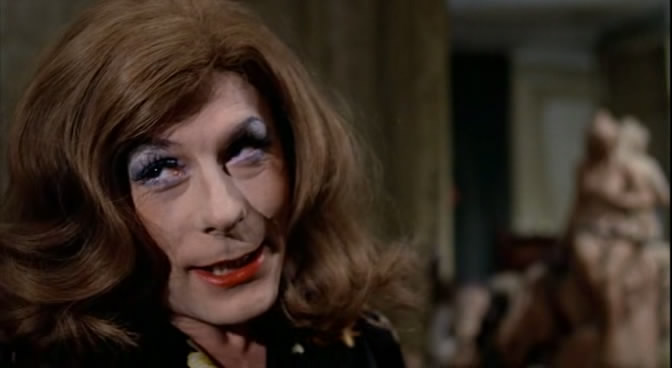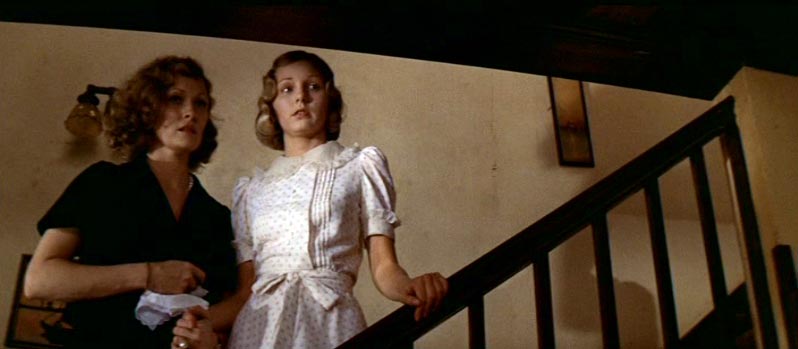Polanski’s Women
Roman Polanski celebrated his 80th birthday this August. The director, born in Paris to Polish parents, has produced a varied body of work over four decades, from the lavish farce The Fearless Vampire Killers to the cruise ship erotic thriller Bitter Moon to the recent comedy of Manhattan-manners Carnage. The films for which he enjoys the most acclaim are those he made in the 1970’s: Repulsion, Rosemary’s Baby, The Tenant, and of course Chinatown, one of the best American films ever made, with what some have called the best screenplay ever written (by Robert Towne, though Polanski changed the ending at the last minute: Towne reportedly referred to Polanski’s relentlessly bleak finale as the “tunnel at the end of the light”).
This year saw the DCP restoration of one of his most revered and long unavailable films, the epic Tess, a period piece about Tess d’Ubervilles’ life and misery, the lead played without spectacle or vanity by a 17-year-old Nastassja Kinski. The story chronicles Tess’ doomed efforts to establish her own space and the legion of men who disappoint her—a drunk father, a sexually violent cousin, and a selfish idealist masquerading as a philosopher, who abandons her once he discovers she is not the pure countrygirl he’d fantasied her to be. Tess is a kind of idealist too, dedicating herself to bone-grinding labour and refusing all the privileges her striking beauty makes available.
Though the film is in every way expansive, stretched out nearly three hours, a panorama of open skies and vast fields, the atmosphere is cramped and claustrophobic: everywhere Tess goes, she is offered the same cheap attention and is met with the same bitter slander when she refuses it. Her world narrows and her spirit hardens until only a brisk and unelaborate murder provides her some genuine satisfaction. There is no other way out of this world.
Again and again Polanski returns to the lives of women, using various genres—horror, noir, costume drama—to explore the forms of suffering and abuse visited upon them; each genre provides a unique world, whose structures and constraints cramp and undermine women in unique kinds of ways. Polanski uses a world and its limits—often so limited as to extend no further than the walls of an apartment—to disclose something about a particular woman, and uses the actions and agitations of a woman to tell us about a world.
 His first women’s film, Repulsion, revolves around the psychic disintegration of Carol, played with wild animal terror by Catherine Deneuve. Carol lives in swinging 60’s London, and while her flatmate and salon coworkers seem to relish in the sexually energetic culture, for Carol this world presents a relentless, lascivious threat of invasion and exposure, aggressions made doubly alien thanks to her immigrant status. This threat becomes so literal, so physicalized, that when her roommate leaves her alone for the weekend she barricades herself in their apartment, which, far from providing relief, only serves to provide a new stage on which Carol can elaborate her fantasies
His first women’s film, Repulsion, revolves around the psychic disintegration of Carol, played with wild animal terror by Catherine Deneuve. Carol lives in swinging 60’s London, and while her flatmate and salon coworkers seem to relish in the sexually energetic culture, for Carol this world presents a relentless, lascivious threat of invasion and exposure, aggressions made doubly alien thanks to her immigrant status. This threat becomes so literal, so physicalized, that when her roommate leaves her alone for the weekend she barricades herself in their apartment, which, far from providing relief, only serves to provide a new stage on which Carol can elaborate her fantasies
What could have been a parody of Freudian psychoanalysis, a caricature of a sexually repressed, moralizing hysteric, is, thanks to Deneuve and Polanski, an actually sympathetic portrait of a response to an unlivable environment. It’s over the top—Polanski consistently links real sympathy and seriousness with high camp and comedy—yet even while she is going mad, Carol’s authority is not utterly undermined. Her landlord really does force his way into her home, her body really is endlessly commented upon, this world really does make demands that she could not possibly satisfy.
In Rosemary’s Baby, the modern world continues to issue its demands, but now in a different voice and on a different body; we move from London to Manhattan, to a young married mother-to-be fending off the invasive interventions of others—husbands, neighbours, and doctors—and the insistent claims made by the growing life that her body serves to host. In both cases the demands are alien and life-sucking (satanic or infantile), insisting that she sacrifice her own life—her life without pain, her life of movement and consciousness, of autonomy and sanity—in order that the other may prosper. Over the course of the film, all bonds with peers, any real community, are severed: her friends die, she becomes too weak to leave her home, and her husband begins to pull away from her changing body (he starts sleeping in pajamas and hates her haircut); of course, the fact that he had sex with her, raped her, while she dreamt of being drugged and bound by a satan-worshipping cult of geriatrics breaks their bond fairly completely.
Like Repulsion, Rosemary’s Baby strikes an incredible balance between representing a woman come undone and suggesting that this is not the wrong response to have. Even while Rosemary and Carol are in some sense mad, this madness retains a kind of appropriateness as a way of negotiating an impossible situation. In achieving this balance, the films suggest that a woman’s world is in some sense impossible, that the claims made on her body and person are excessive, alien, perverse and self-satisfying. And the effectiveness of these claims, their ability to take root, depends on their pathologizing, undermining, and ridiculing women’s experience and judgment. When Rosemary’s Dr. Saperstein—recommended by neighbour Minnie—insists that she not read any books and that her incessant pain is normal, he speaks not only as a satanist but as a member of the (exclusively male) medical community with its protected knowledge and institutionalized power.
These films, together with The Tenant, comprise what critics have called Polanski’s Apartment Trilogy, a triptych of persecution fantasies borne out in the transient, sharable space of the urban apartment. But we can also see these three films, along with Tess and Chinatown, as Polanski’s Women’s Films. While Polanski himself plays the male lead for The Tenant, when he comes to occupy an apartment—or it comes to occupy him—he comes to occupy the position of a woman, as though to be trapped and exposed the way Carol or Rosemary are is to become feminized.
Some might see this as problematic, indeed some might suggest that Polanski’s women are everywhere tortured and pathologized, that Polanski himself is one of a long line of male directors that thrill in tormenting their female characters and the actresses themselves: see also Alfred Hitchcock and of course Lars von Trier.
It seems to me, though, that while Hitchcock positions himself firmly in the director’s chair, over and above his character’s plight, Polanski’s films never feel wholly outside the experience and struggle of their female leads. Films like Rosemary’s Baby and Repulsion are what Tzvetan Todorov calls fantastic: these are stories that do not finally establish whether their bizarre events are real (and thus their world is unlike ours) or imagined (and thus their protagonists are unreliable). And in aligning himself, through the character of Trelkovksy/Simone, with the women whose stories he is interested to tell, Polanski demonstrates that he is not only concerned to orchestrate and present a world in which women are tortured but is also invested in understanding such a world and position from within. Again, while The Tenant is darkly funny and even cheeky—as when he coos “I’m pregnant,” or his own head bounces gently outside his window—Polanski takes this role, this person, utterly seriously; the humour comes not from pointing at Trelkovksy/Simone and laughing, but from recognizing in the exaggeration and excess something deeply familiar, deeply possible. In The Tenant, as in all of his films about women, Polanski's focus is on what Jonathan Rosenbaum has called "humane anguish."
Nowhere is humane anguish better displayed than in Evelyn Mulwary's face. Chinatown is a film that is itself the attempt to avoid a woman’s story, a film whose big reveal demonstrates that this has been a woman’s story all along.
Jake Gittes thinks he has a particular type of crime to solve—murder and corruption—and the film proceeds as though this were an ordinary noir (though set in a sun-drenched California). But when Evelyn informs Jake—under his threats—of her deeply personal and deeply gendered secret, the film turns over and becomes a women’s film. Here, Polanski does more than tell a story about a detective’s failure to do justice to a female victim; he exhibits this failure in the form of the telling itself, the very structure of the film is an avoidance of Evelyn. Chinatown takes the logic of Polanski’s women’s films even further: while the other films are about the world’s failure to adequately respond to women and its infinite inventiveness in silencing them, Chinatown simply fails its female character, it simply silences her. The film warrants dozens of screenings for many reasons, one of which is to see how Evelyn subtly and regularly calls out for acknowledgment and how consistently Jake, and we, refuse her.
In the ending of Towne’s original script, Jake manages to secure Evelyn and Katherine’s safe getaway. Paradoxically, by blotting out that possibility Polanski can bring Evelyn finally, properly into view. Had she escaped, the film would have ended on the note of Jake’s heroic triumph; by killing her—and sending Katherine into the grasping arms of a groaning Noah Cross—Polanski brings belated attention to her unacknowledged presence.
Polanski’s best films are the films he’s made about women and their protest. But thinking about these films, it is impossible not to think of the women in his life: his mother, Bula, who was murdered while pregnant in Birkenau at Auschwitz; his wife, Sharon Tate, who was murdered while pregnant by the Manson family in California; and Samantha Gailey, whom Polanski was charged with raping while she was 13 years old.
I don’t know what kind of role these people and these events—especially his committing a sexual assault against a minor—should play in thinking about his movies; for me this remains an open and troubling question. Some might take his crime as reason enough to give up on his movies, certainly ground enough to give up any expectation that his films could display a sensitivity to women’s lives. These issues raise properly philosophical questions about the role an action should play in thinking about character, and the role character should play in thinking about art (a question made even more difficult with a collaborative medium like film). I think, though, it is still possible to watch his films about women and see something like a capacity to speak truly about our experience, to find in cinema the capacity to reflect our world.




